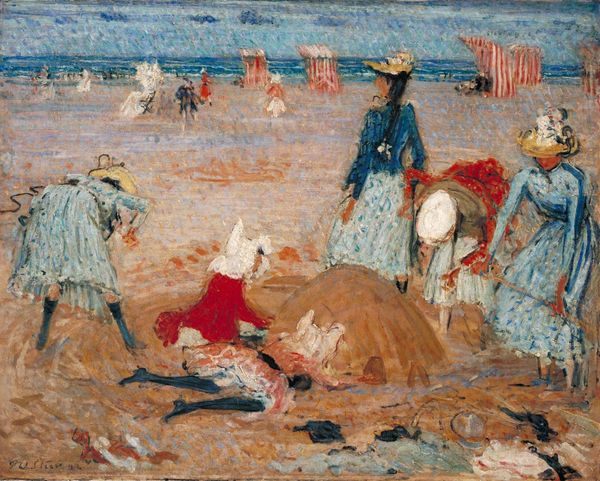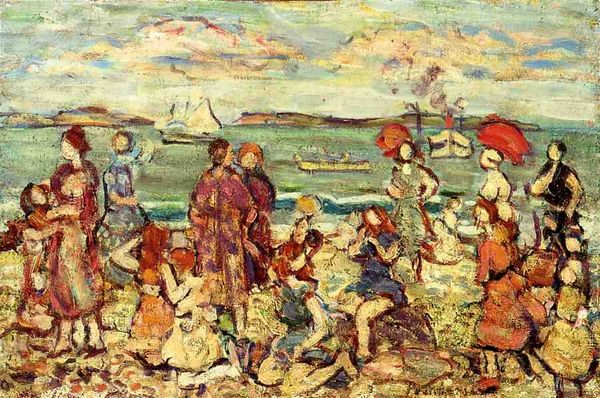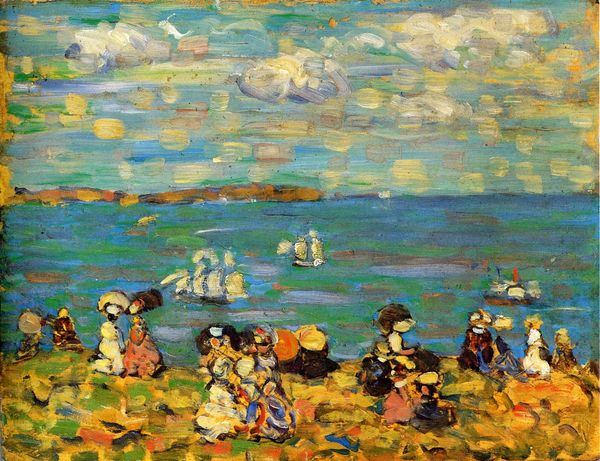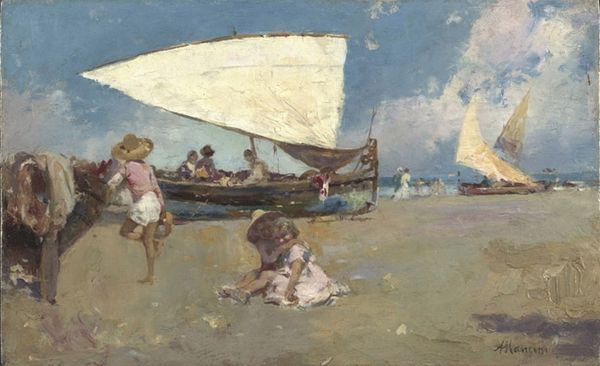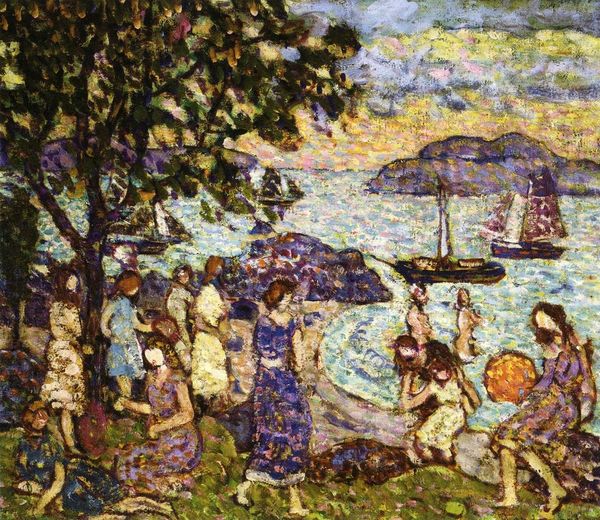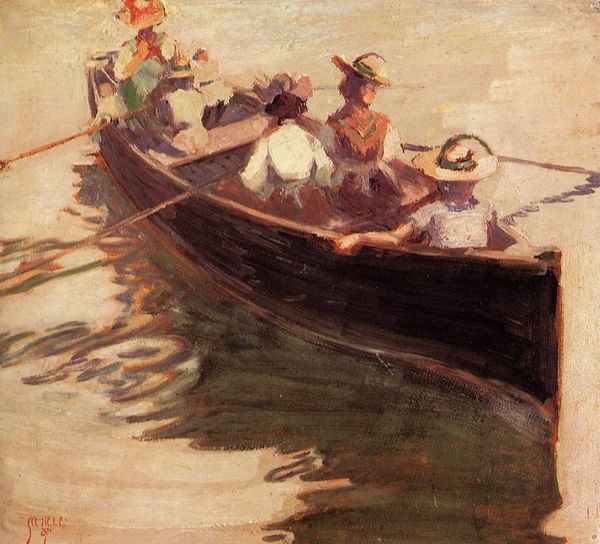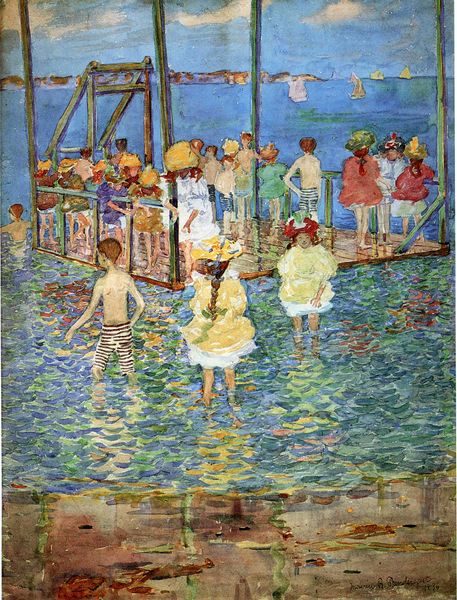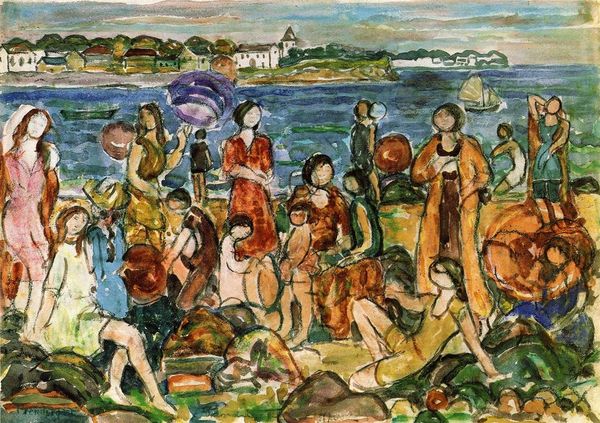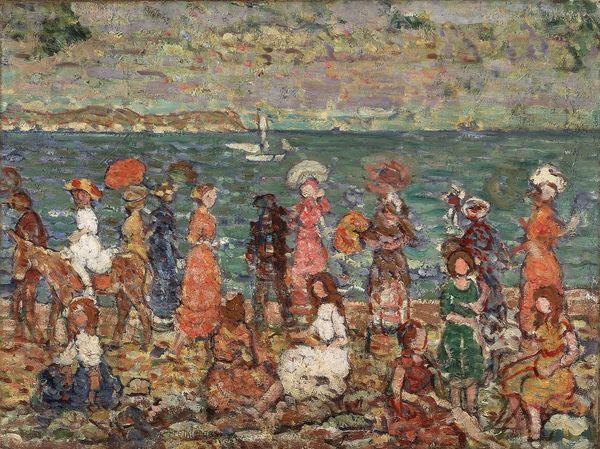
Dimensions: 34.29 x 45.72 cm
Copyright: Public domain
Curator: Maurice Prendergast’s “Low Tide,” created around 1897, presents a bustling seaside scene rendered in gouache and watercolor. The materiality of Prendergast's marks on the surface are apparent and quite bold! What are your first impressions? Editor: The immediacy is striking. There's a snapshot quality to it, but with an underlying sense of both leisure and labor in the depiction of the children alongside the boat, its form dominating much of the picture. The painting captures a casual scene of kids, their implied freedom, but also reminds me of larger social issues affecting seaside economies. Curator: It does. The setting likely resonates with notions of work and escape. The location—often thought to be Revere Beach in Boston—played a pivotal role in early public recreation, making access to waterfront spaces an evolving question tied to class and gender during that era. How does his use of paint relate, in your opinion, to the subject matter here? Editor: Prendergast’s distinctive Post-Impressionist approach to gouache and watercolor creates texture in the details, the visible labor inherent in its crafting echoing the actual working life happening around them on the waterfront in terms of shipbuilding and trade. The dappled light he is evoking feels like real atmosphere that one can sense while one gazes upon this painting. Curator: I agree that the active brushwork energizes the narrative. When viewed through the lens of late 19th-century urban reform movements and ideas around gender roles and social visibility, we can begin to unravel how the spaces for public enjoyment transformed. This painting not only freezes an unassuming afternoon scene but makes subtle commentaries. Editor: These elements work to engage the eye as well in an unusual dialogue where the subjects are depicted enjoying themselves in a way that reflects their connection with both labor and escape—and by portraying them using bold and apparent painterly maneuvers the painting implicates labor itself into its overall materiality. For Prendergast it's more than subject; he depicts the activity of work within paint handling as much as on this shoreline in its original context. Curator: It is compelling to look beyond surface representations and to question narratives, right? With its loose, impressionistic technique and careful consideration of public life, “Low Tide” encapsulates significant discussions surrounding leisure, social mobility, and artistic production itself. Editor: Right! Thinking of both the material and societal implications of a fleeting scene lets us revisit “Low Tide” not just as an aesthetic pleasure, but as social documentation and inquiry into processes beyond its pictorial plane, engaging with art beyond the visual field.
Comments
No comments
Be the first to comment and join the conversation on the ultimate creative platform.

